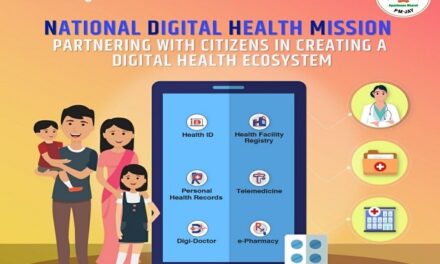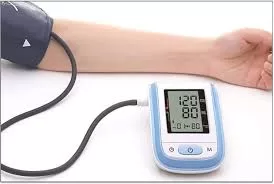Despite decades of efforts to reduce lead exposure, consumer products continue to pose significant health risks, particularly to children, according to a recent review by Rutgers Health expert Adrienne Ettinger. In her commentary for Environmental Health Perspectives, Ettinger highlights that lead exposure, often from everyday products, remains a global threat that requires ongoing vigilance.
Ettinger, an adjunct professor at Rutgers School of Public Health and former chief of the Lead Poisoning Prevention and Environmental Health Tracking Branch at the U.S. Centers for Disease Control and Prevention (CDC), reviewed a study on lead in consumer products across four U.S. states—New York, California, Oregon, and Washington. The study, co-authored by Rutgers graduate Paromita Hore and conducted by Pure Earth in collaboration with state and local health departments, found that consumer products were a primary source of lead exposure for many children.
“Consumer products were consistently identified as one of the main sources of lead exposure—and the only identified source in 15% to 38% of cases—in investigations of children with elevated blood lead levels in these four jurisdictions,” Ettinger stated.
The Pervasiveness of Lead in Consumer Goods
Lead continues to be found in a wide range of consumer goods, including imported foods and spices, cosmetics, toys, and even cake-decorating materials. Its durability and versatility, coupled with its natural abundance, have led to its persistent use across industries. However, lead is a potent neurotoxin, particularly harmful to children. Even low levels of exposure can disrupt neurodevelopment and cause long-term health issues, such as headaches, abdominal pain, infertility, and brain damage. According to estimates, at least 2.5% of children have blood lead levels higher than the CDC’s reference value.
Historical Successes and Lingering Challenges
While significant progress has been made in reducing lead exposure in the U.S.—most notably the removal of lead from gasoline and paint—Ettinger warns that many challenges remain. “The removal of lead in gasoline and paint was declared one of the biggest public health successes in the 20th century,” she said, noting that average blood lead levels in the U.S. population dropped by over 95% between 1976 and 2016. Yet, globally, an estimated 800 million children still have blood lead levels exceeding the World Health Organization (WHO)’s threshold of concern.
Part of the problem, Ettinger explains, is the fragmented regulatory landscape in the U.S. Different federal and state agencies are responsible for overseeing various products and sources of lead exposure, which can create loopholes that manufacturers may exploit. Moreover, lead contamination from historical sources, such as abandoned industrial sites and aging housing, continues to pose a risk.
Advocating for Stronger Regulations and Data Tracking
To further mitigate lead exposure, experts recommend several actions. Strengthening both domestic and international regulations, along with more rigorous enforcement, would better safeguard consumers. Additionally, the establishment of a national data repository to track and communicate lead-related risks could empower people with information to protect themselves and their families.
Ettinger points to an initiative by the New York City Department of Health and Mental Hygiene, which has called for a national database of consumer products identified with lead. “This would systematically monitor and allow for better communication of ongoing risks to the public,” she explained.
The Global Dimension of Lead Exposure
Lead exposure is also exacerbated by global trade. Products manufactured in countries with lax or nonexistent regulations often make their way into U.S. markets, especially through online platforms and personal imports. This issue underscores the need for international cooperation and education, Ettinger emphasized.
Global efforts to combat lead poisoning are gaining momentum. The U.S. Agency for International Development (USAID), for example, has called for a worldwide initiative to eradicate toxic lead from consumer goods. Such efforts, if successful, could foster greater international regulation and cooperation, offering hope for reducing global lead exposure.
Practical Steps for Consumers
While regulatory efforts are crucial, individuals can also take steps to protect themselves from lead exposure. Staying informed about product recalls is essential, and websites like recalls.gov provide updated information on hazardous products. Independent organizations such as Consumer Reports routinely test products for lead, offering additional guidance to consumers.
Residents of older homes, particularly those built before 1950, should exercise caution when renovating, as these structures may contain lead-based paint. Professional testing and safe renovation practices can significantly reduce the risks.
Routine blood lead testing is not recommended for the general population but is advisable for high-risk groups, such as individuals who work with lead or engage in hobbies like crafting fishing sinkers or bullets. In such cases, consulting with a healthcare provider about a blood lead test can be a prudent step.
Moving Forward
Ettinger’s commentary stresses the importance of continued efforts to eliminate lead from consumer products. “Ensuring that consumer products are free of lead and mitigating historical sources of lead from the production, manufacturing, and disposal of consumer goods are critical actions for public health,” she concluded.
With ongoing advocacy, education, and stronger regulations, the fight against lead exposure can achieve further victories—protecting children and adults from the hidden dangers that persist in everyday products.
More Information
Adrienne S. Ettinger, Invited Perspective: Why Aren’t We Doing More to Ensure Consumer Products Are Free of Lead?, Environmental Health Perspectives (2024). DOI: 10.1289/EHP15322












